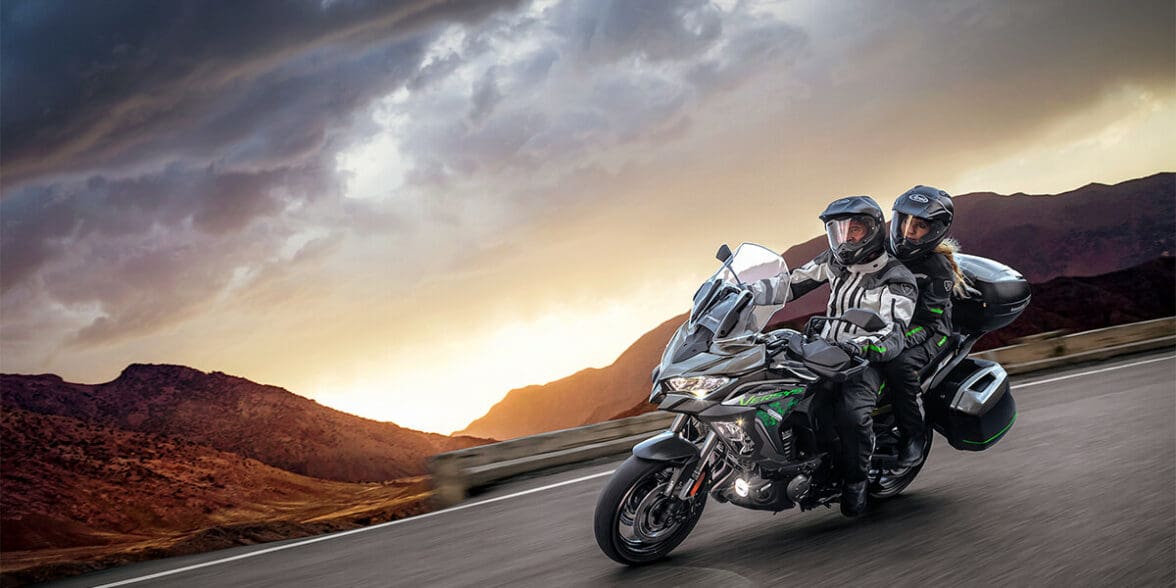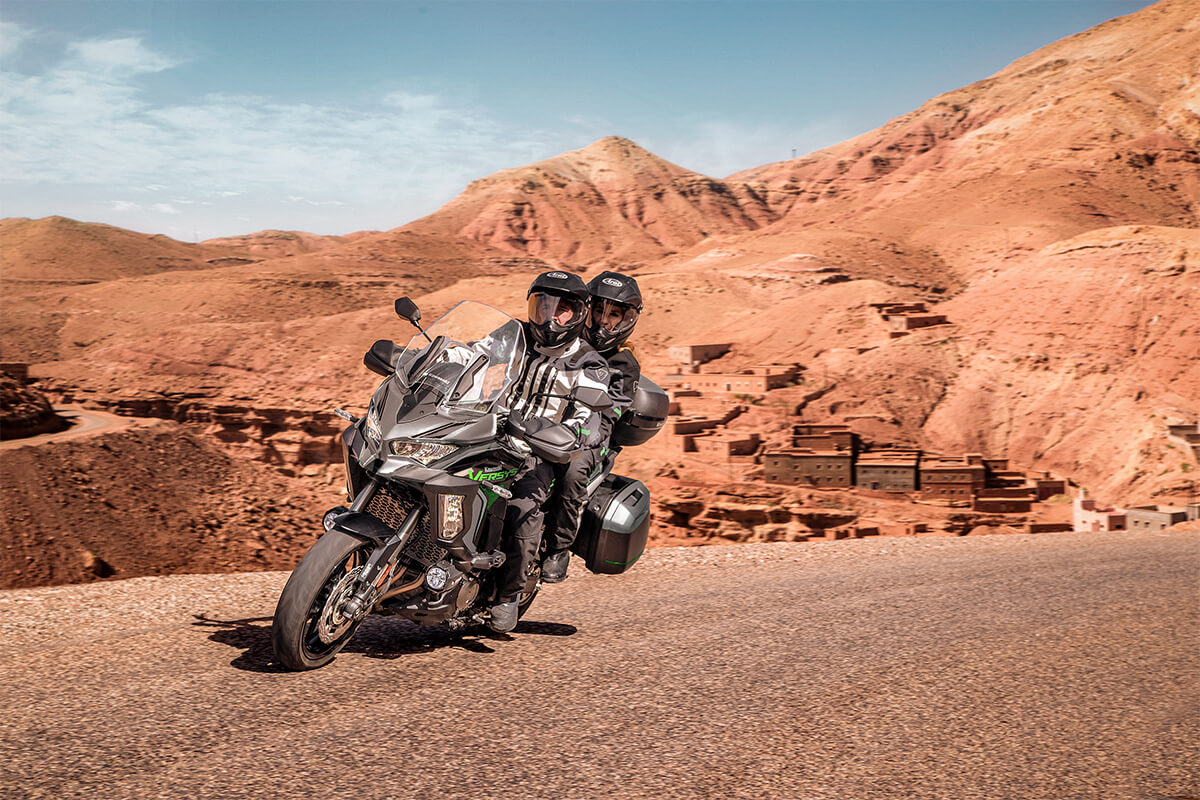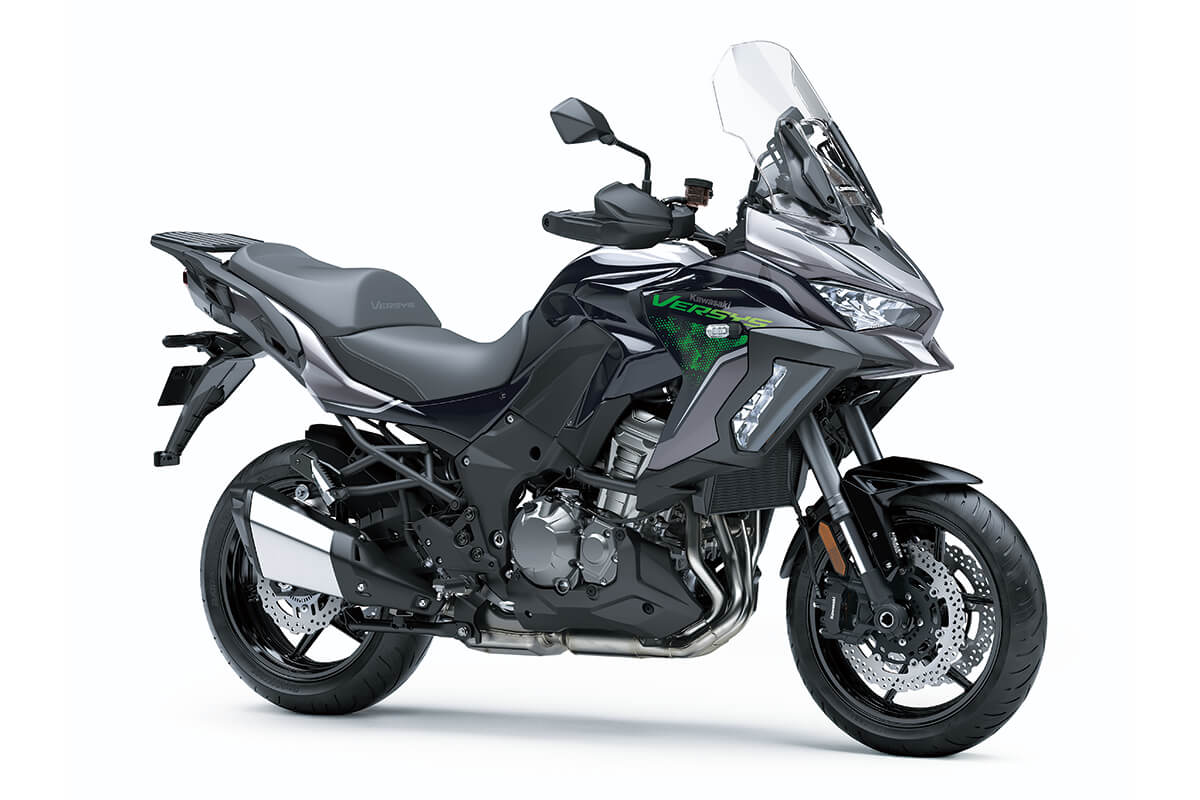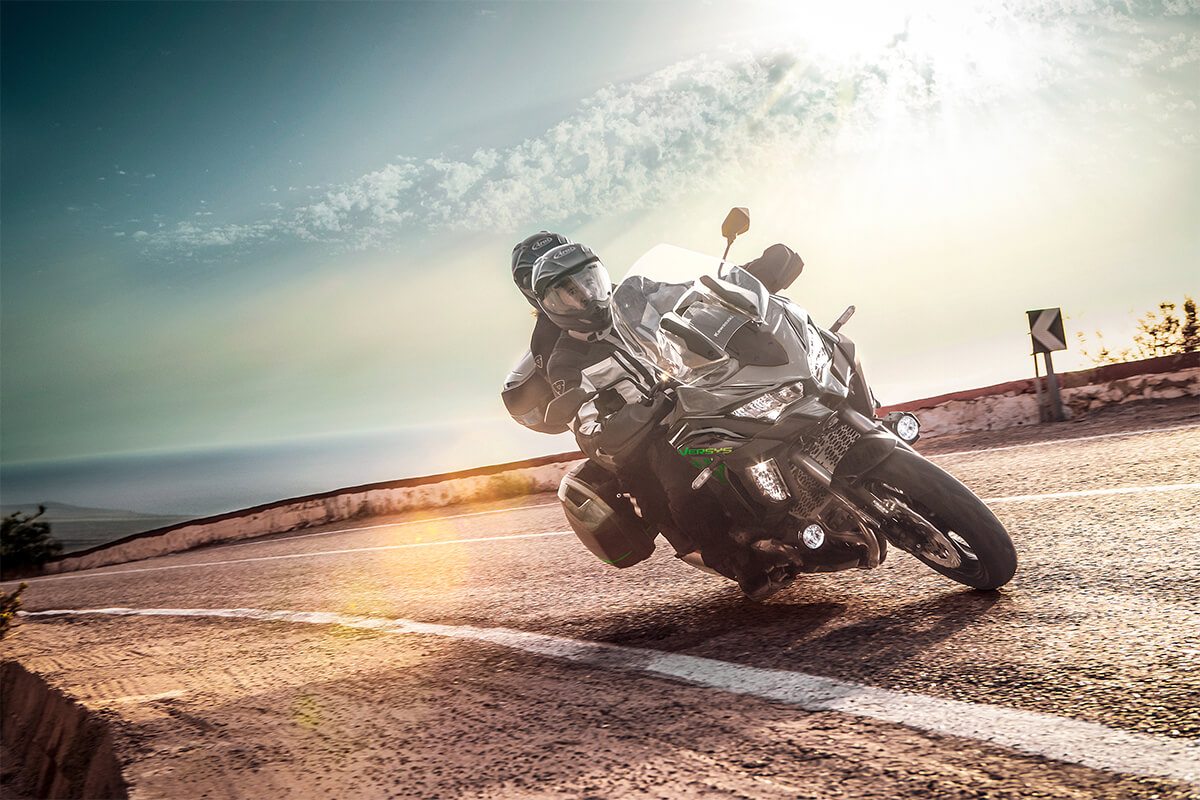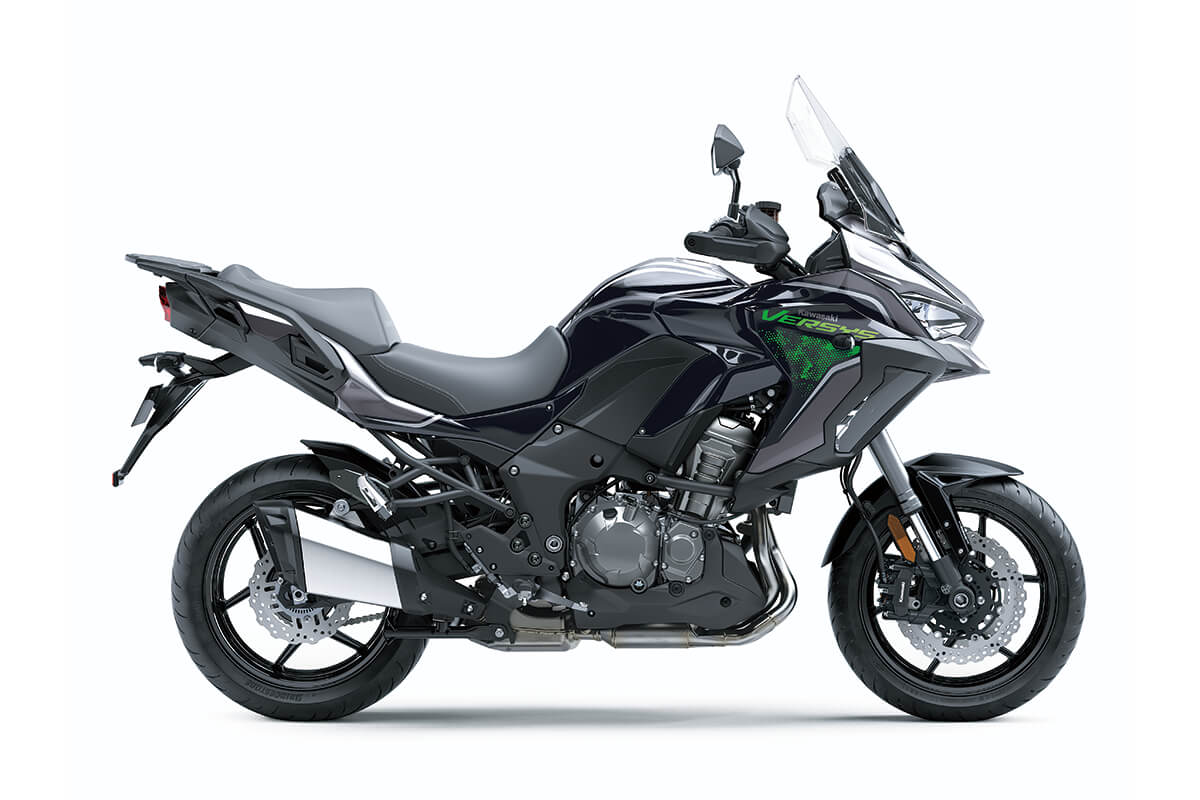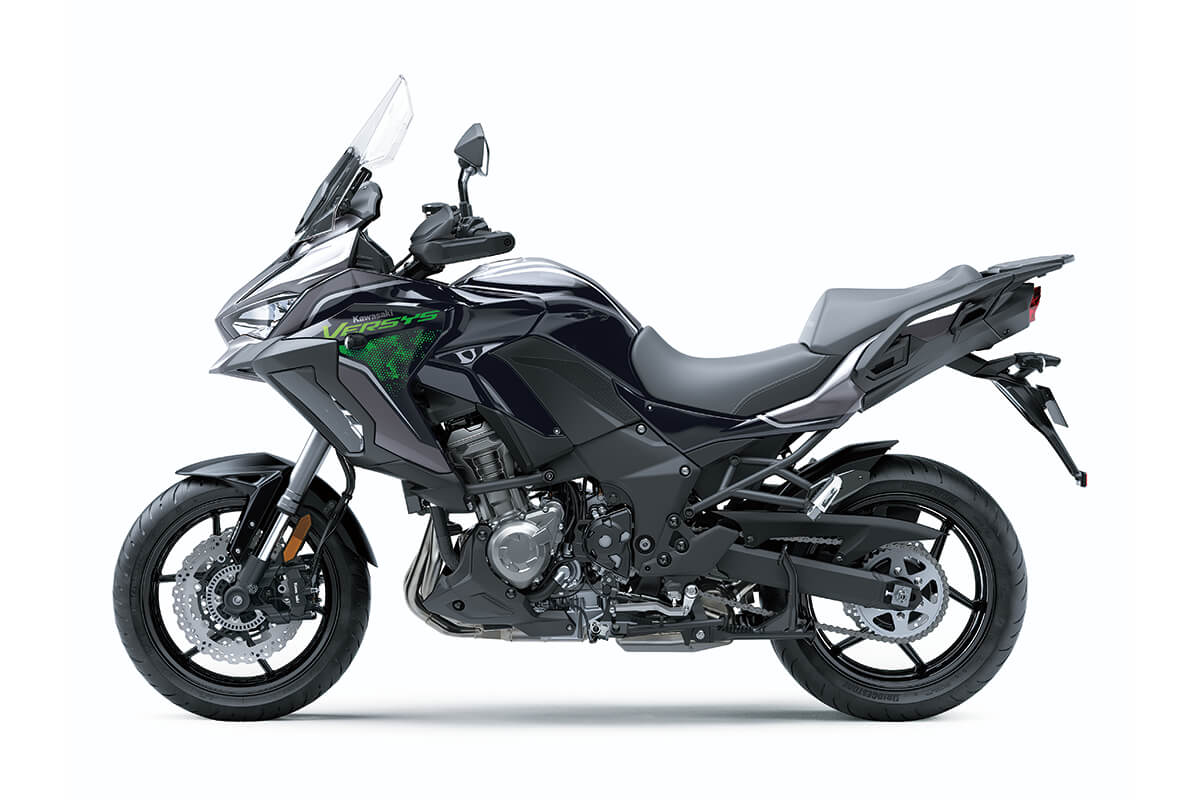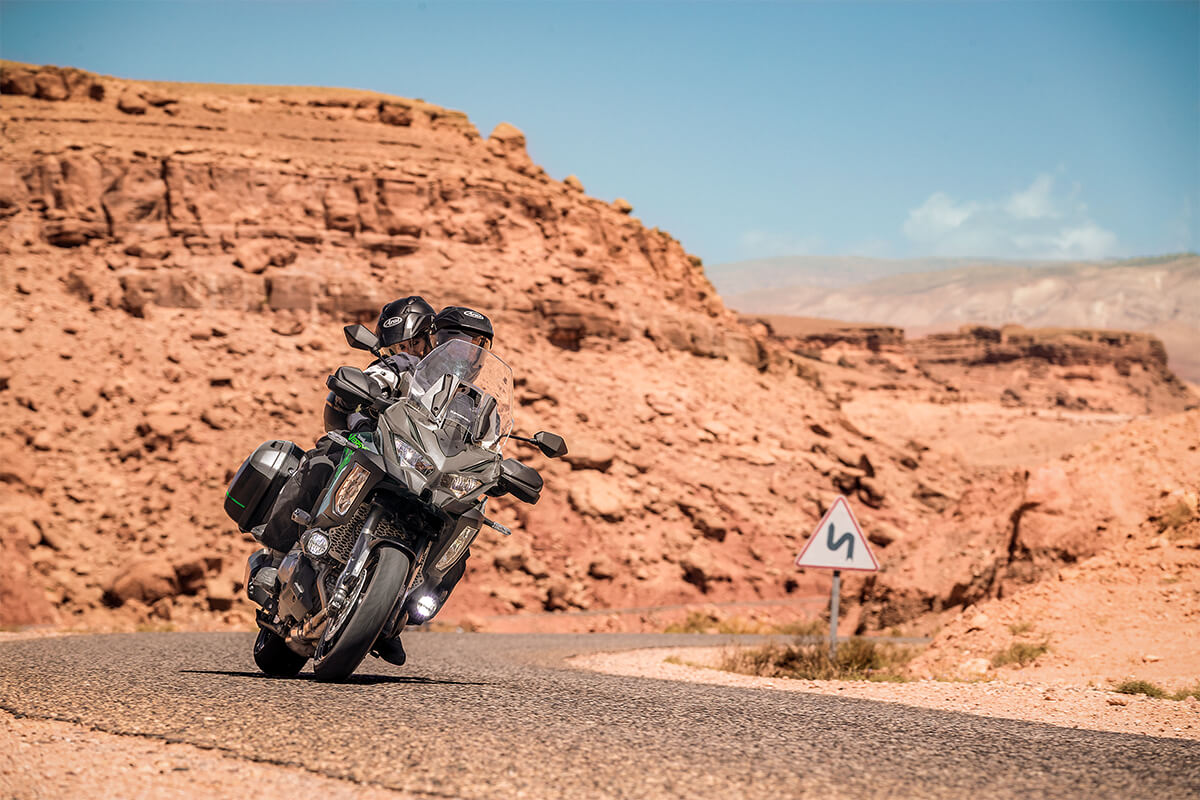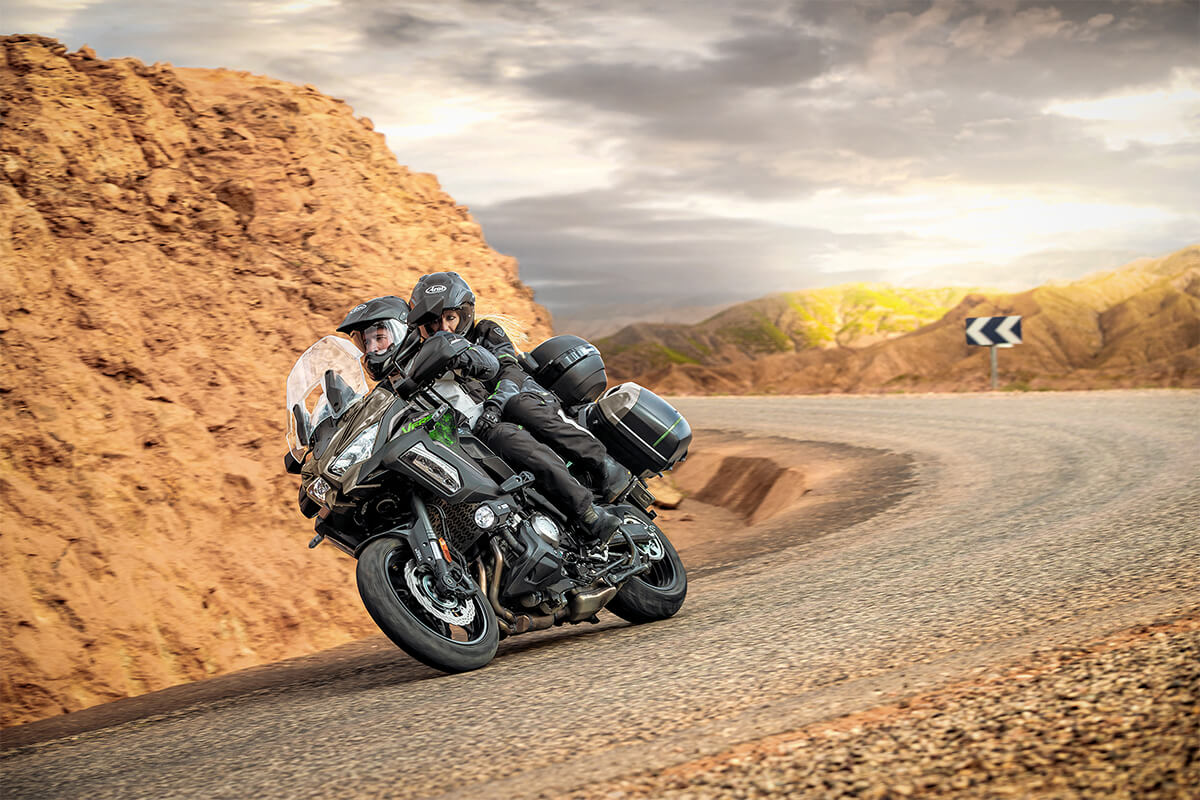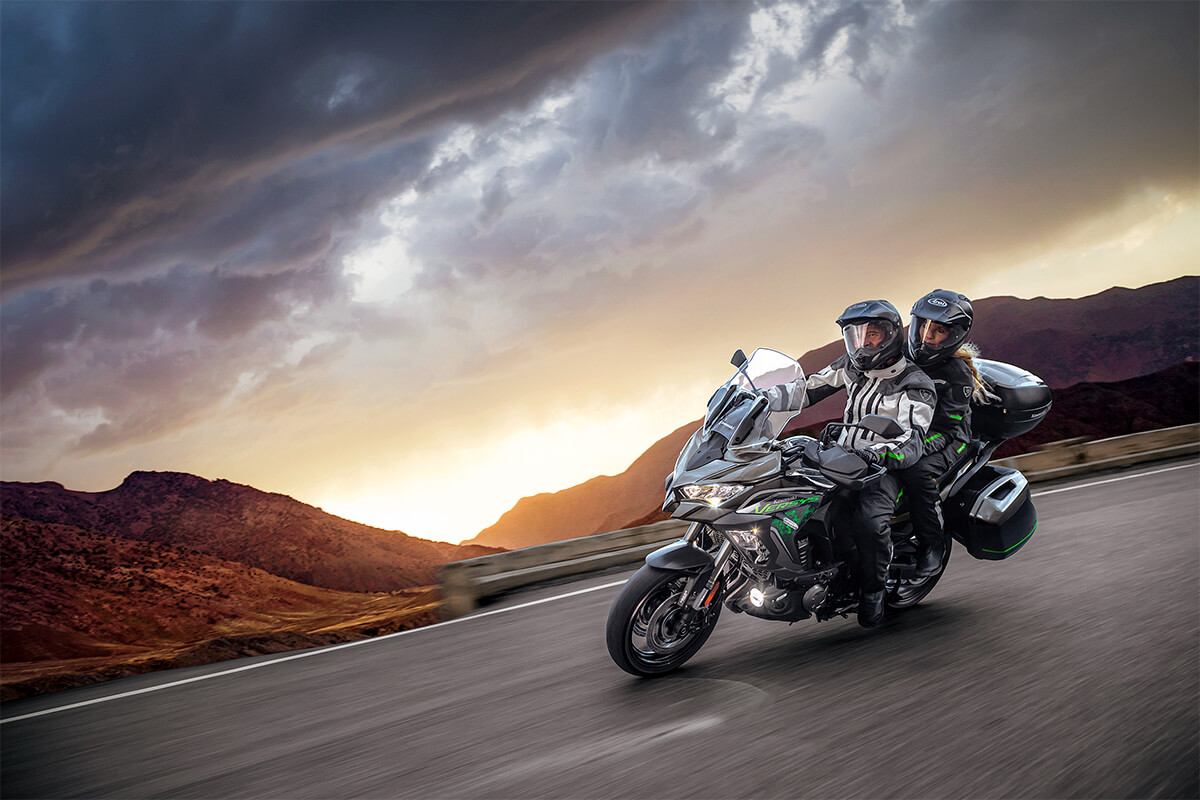The 2022 Kawasaki Versys 1000 SE LT+: An Adventure Touring Superstar
Contents
The whole Versys series seems to be a statement by Kawasaki that serious touring bikes don’t have to be chunky road sofas. And the Versys 1000 SE LT+—by far the biggest, baddest Versys being offered in 2022—stays true to that philosophy, with streamlined styling and performance that seem too good to be true, given how comfortable it is. Look out, Harley-Davidson.
Not that Team Green is really competing with Road Kings and Fat Boys here. This bike is more apt to be measured against other Japanese-made motorcycles for the adventure crowd, like the Yamaha Super Tenere ES or the Suzuki V-Strom 1050XT. But it’s a formidable touring bike by any standard.
For power, you get a 1043cc in-line four-cylinder engine producing 120 HP @ 9,000 rpm and 75.2 ft-lbs of torque @ 7,500 rpm. Rider aides include electronic cruise control, Kawasaki Traction Control, multiple riding modes, and Kawasaki Cornering Management function. This is very much a bike designed to make your long journeys safer and more comfortable—there’s even Bluetooth smartphone connectivity and a TFT color meter.
Most of the upgrades for 2022 are pretty subtle—the Showa Skyhook EERA software has been fine-tuned to help keep rides smooth and provide a sporty feeling to the bike’s handling. The color for this year is Metallic Graphite Gray / Metallic Diablo Black / Metallic Flat Spark Black, giving the bike a darker and more ominous (read: badass) appearance.
If you’re looking for a serious touring bike that can handle a range of riding conditions while still offering fairly sporty performance and enough power for long-distance two-up riding, you’ll be hard pressed to find a better option amongst the available 2022 Kawasaki motorcycles.
The Versys 1000 SE LT+ starts at $18,399 USD / $20,299 CAD.
Model Overview
General Info
- Price: $18,399 USD / $20,299 CAD
- Key Features:
- Kawasaki Electronic Control Suspension
- Electronic Cruise Control & multiple riding modes
- Kawasaki Traction Control & Kawasaki Cornering Management Function
- TFT color meter with smartphone connectivity
- ABS
Main Specs
- Engine: 1043cc in-line four-cylinder engine
- Power: 120 HP @ 9,000 rpm
- Torque: 75.2 ft-lbs of torque @ 7,500 rpm
- Curb Weight: 567 lbs (257 kg)
- Seat Height: 33.1 in (840mm)
Competitors
2022 Kawasaki Versys 1000 SE LT+ Specifications
ENGINE |
||
| Engine | 1043cc, 4-stroke, 4-cylinder, DOHC, 16-valve, liquid-cooled | |
| Power | 120HP | |
| Bore x Stroke | 77.0 x 56.0mm | |
| Compression Ratio |
10.3:1
|
|
| Fuel System | DFI® with 38mm Keihin ETV throttle bodies (4) | |
| Starter | Electric | |
| Electronic Rider Aids | Kawasaki Electronic Control Suspension (KECS), Integrated riding modes, Kawasaki Quick Shifter (KQS), Electronic cruise control and heated grips | |
DRIVETRAIN |
||
| Clutch | ||
| Transmission | 6-speed, return shift, Kawasaki Quick Shifter (KQS) | |
| Final Drive | Sealed chain | |
CHASSIS |
||
| Suspension Front | 43mm inverted fork with KECS-controlled rebound and compression damping, manual spring preload adjustability and top-out springs/5.9 in | |
| Suspension Rear | Horizontal back-link New Uni-Trak®, BFRC gas charged shock with piggyback reservoir, KECS-controlled compression and rebound damping electronically-adjustable spring preload/5.9 in | |
| Brakes Front | Dual 310mm petal-style discs with four-piston calipers, ABS | |
| Brakes Rear |
Single 250mm petal disc with single-piston caliper, ABS
|
|
| Tires Front | 120/70 ZR-17 | |
| Tires Rear | 180/55 ZR-17 | |
| Fuel Tank Capacity | 5.5 gal | |
| Color |
Metallic Graphite Gray/Metallic Diablo Black/Metallic Flat Spark Black
|
|
ELECTRICAL |
||
| Ignition | TCBI with electronic advance | |
| Spark Plugs | ||
| Headlight | LED | |
| Tail Light | LED | |
DIMENSIONS |
||
| Overall Length | 89.4 in | |
| Overall Width | 37.4 in | |
| Overall Height | 58.7 in/60.2 in (windshield down/up) | |
| Wheelbase | 59.8 in | |
| Ground Clearance | 5.9 in | |
| Seat Height | 33.1 in | |
| Curb Weight | 566.7 lb (+ Saddlebags, Hand Guards, & Hardware approx. 20 lb.)* | |
WARRANTY |
||
| Warranty | 12 Months | |
| Kawasaki Protection Plus | 12, 24, or 36 months | |
2022 Kawasaki Versys 1000 SE LT+ Features
Assist & Slipper Clutch
Under normal operation, the assist cam functions as a self-servo mechanism, pulling the clutch hub and operating plate together to compress the clutch plates. This allows the total clutch spring load to be reduced, resulting in a lighter clutch lever feel when operating the clutch.
When excessive engine braking occurs – as a result of quick downshifts (or an accidental downshift) – the slipper cam comes into play, forcing the clutch hub and operating plate apart. This relieves pressure on the clutch plates to reduce back-torque and helps prevent the rear tire from hopping and skidding. This race-style function is particularly useful when sport or track riding.
Dual Throttle Valves
On models with dual throttle valves, there are two throttle valves per cylinder: in addition to the main valves, which are physically linked to the throttle grip and controlled by the rider, a second set of valves, opened and closed by the ECU, precisely regulates intake airflow to ensure a natural, linear response. With the air passing through the throttle bodies becoming smoother, combustion efficiency is improved and power is increased.
Economical Riding Indicator
While effective vehicle speed and engine speed may vary by model, paying attention to conditions that cause the “ECO” mark to appear can help riders improve their fuel efficiency – a handy way to increase cruising range. Further, keeping fuel consumption low also helps minimize negative impact on the environment.
Electronic Cruise Control
Electronic Throttle Valves
Electronic throttle valves also enable more precise control of electronic engine management systems like S-KTRC and KTRC, and allow the implementation of electronic systems like KLCM, Kawasaki Engine Brake Control, and Electronic Cruise Control.
KCMF (Kawasaki Cornering Management Function)
KTRC (Kawasaki Traction Control)
Less intrusive modes maintain optimum traction during cornering. Designed with sport riding in mind, they facilitate acceleration out of corners by maximizing forward drive from the rear wheel. And because Kawasaki’s sophisticated software bases its dynamic analysis on the chassis’ orientation relative to the track surface (rather than relative to a horizontal plane), it is able to take into account corner camber, gradient, etc., and adapt accordingly.
In the more intrusive modes (and for some models, in any mode), when excessive wheel spin is detected, engine output is reduced to allow grip to be regained, effectively enabling riders to negotiate both short, slippery patches (train tracks or manhole covers) and extended stretches of bad roads (wet pavement, cobblestone, gravel) with confidence.
Power Modes
Smartphone Connectivity
KQS (Kawasaki Quick Shifter)
ABS (Anti-lock Brake System)
2022 Kawasaki Versys 1000 SE LT+ Photos
2022 Kawasaki Versys 1000 SE LT+ Videos
The Amazing 2022 Kawasaki Versys 1000 SE LT+ Colors Option | Price, Spec & Features DetailsAWASAKI NINJA ZX10R KRT EDITION
2022 Kawasaki Versys 1000 SE LT+ Demo Ride
Links
Kawasaki Official Websites


